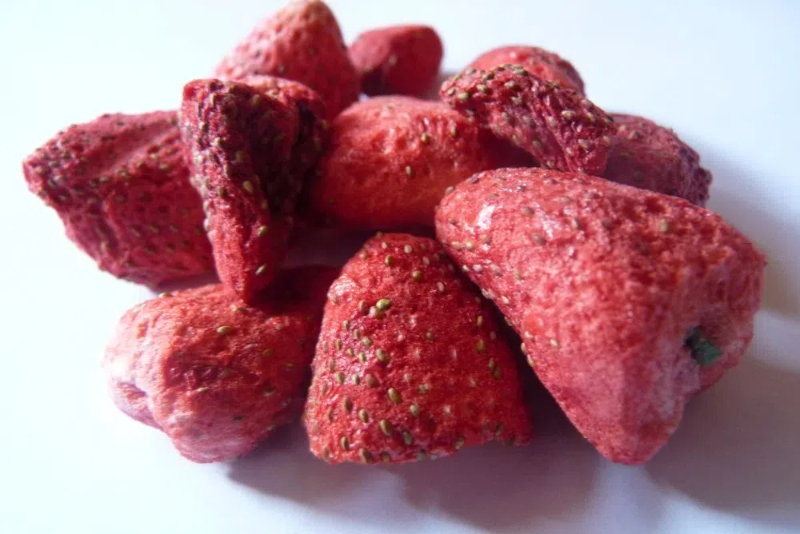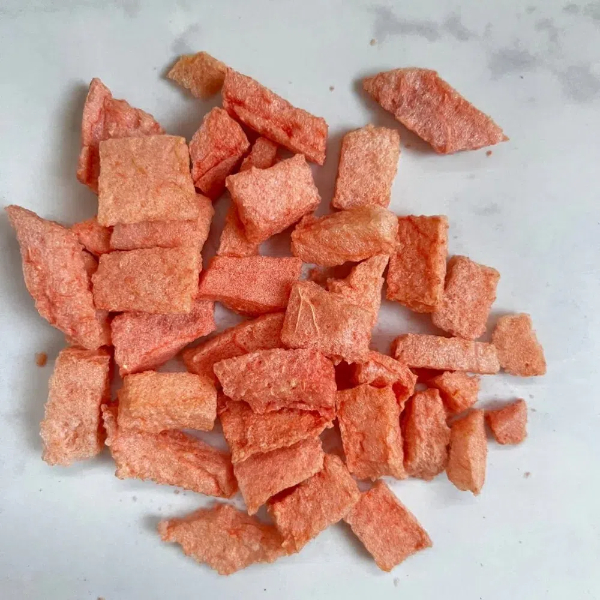As the world grapples with climate change and environmental sustainability, the food processing industry is under increasing pressure to adopt more eco-friendly practices. One of the key areas of focus is the drying process, which is crucial for preserving food quality and extending shelf life. Penetration type dryer machines have emerged as a promising solution, offering significant energy efficiency and reduced environmental impact compared to traditional drying methods.

Introduction to Penetration Type Dryers
Penetration type dryers are designed to efficiently dry products by utilizing a patented half-vacuum air duct system. This technology allows for even drying even when products are stacked together, making it ideal for large-scale operations. These dryers are energy-efficient, using only 25% of the electricity required by traditional dryers, and offer adjustable temperature settings from 18°C to 80°C, supporting hot drying, cool drying, and dehumidification functions.
Key Features of Penetration Type Dryers
1. Energy Efficiency: These dryers significantly reduce energy consumption compared to traditional models, making them cost-effective for businesses.
2. Versatility: They can handle a wide range of products, from small batches to large quantities, with capacities ranging from 300 kg to 10 tons.
3. Temperature Control: The ability to adjust temperatures ensures that products are dried without damage, preserving their quality.
Environmental Benefits
The environmental benefits of penetration type dryers are substantial. By reducing energy consumption significantly, these machines contribute to environmental sustainability by lowering carbon emissions associated with drying processes.
Reduced Carbon Footprint
Penetration type dryers use less electricity, which directly translates into a reduced carbon footprint. This is crucial in the context of global efforts to combat climate change by minimizing greenhouse gas emissions.
Efficient Use of Space
These dryers allow for the efficient use of space, as products can be stacked during the drying process. This feature is particularly beneficial for facilities with limited area, enabling them to increase production capacity without expanding their physical space.
Consistent Drying Results
The half-vacuum system ensures uniform drying, reducing the risk of over-drying or under-drying. This consistency in drying results not only enhances product quality but also minimizes waste, further contributing to environmental sustainability.

Comparison with Other Drying Technologies
Heat Pump Dryers
Heat pump dryers are known for their rapid drying capabilities and are suitable for sensitive products like seafood and fruits. However, they may require more complex maintenance compared to penetration type dryers and can be more expensive upfront.
Vacuum Dryers
Vacuum dryers are ideal for heat-sensitive materials and offer rapid drying times. However, they typically require more specialized equipment and may not be as versatile as penetration type dryers for stacked products.
Multi-Layer Mesh Belt Dryers
Multi-layer mesh belt dryers are often used for products like fruits and vegetables but require more maintenance due to their complex belt systems.
Case Studies and Success Stories
Several companies have successfully integrated penetration type dryers into their operations, achieving significant improvements in efficiency and product quality. For instance, a leading fruit processing company in Europe reported a 30% reduction in energy costs after switching to penetration type dryers. Similarly, a meat processing plant in Asia increased its production capacity by 25% without expanding its facility, thanks to the space-efficient design of these dryers.
Future Developments and Integration of Technology
As technology advances, the demand for more efficient and sustainable drying solutions is increasing. Penetration type dryers are well-positioned to meet these demands due to their energy efficiency and versatility. Future developments may include integrating AI for real-time monitoring and optimization of drying processes, further enhancing their appeal to modern food processing facilities.
Role of Artificial Intelligence
Artificial intelligence can play a crucial role in optimizing drying processes by monitoring temperature, humidity, and product moisture levels in real-time. This allows for precise adjustments to ensure consistent quality and reduce waste. AI can also predict maintenance needs, reducing downtime and improving overall efficiency.
Integration with Renewable Energy Sources
The integration of renewable energy sources, such as solar or wind power, could further enhance the sustainability of penetration type dryers. This would not only reduce reliance on fossil fuels but also lower operational costs over time.
Enhanced Automation and Monitoring
Future models may incorporate more advanced automation systems, enabling remote monitoring and control. This would allow operators to manage drying processes more effectively, even from off-site locations, ensuring optimal performance and minimizing errors.
Impact on Food Quality and Safety
Penetration type dryers also contribute to maintaining high food quality and safety standards. By ensuring consistent drying conditions, these machines help prevent the growth of bacteria and mold, which can spoil food products. Additionally, the controlled environment reduces the risk of contamination, ensuring that dried products meet stringent food safety regulations.
Preservation of Nutritional Value
The gentle drying process of penetration type dryers helps preserve the nutritional value of food products. This is particularly important for fruits and vegetables, where excessive heat can lead to the loss of vitamins and minerals.
Compliance with Regulatory Standards
These dryers are designed to meet international food safety standards, such as HACCP and ISO 22000. This ensures that food products dried using these machines are safe for consumption and compliant with regulatory requirements.
Conclusion
Penetration type dryer machines offer a unique combination of efficiency, versatility, and cost-effectiveness, making them an attractive choice for businesses in the food industry. Their ability to handle stacked products while maintaining uniform drying conditions sets them apart from traditional drying methods. As companies seek to optimize their operations and reduce environmental impact, penetration type dryers are poised to play a significant role in the future of food processing.

Frequently Asked Questions
1. What are the primary environmental benefits of using penetration type dryers?
Penetration type dryers significantly reduce energy consumption, which leads to lower carbon emissions and contributes to environmental sustainability. They also allow for efficient use of space and consistent drying results, minimizing waste.
2. How do penetration type dryers compare to heat pump dryers in terms of energy efficiency?
Penetration type dryers are generally more energy-efficient than heat pump dryers, using only 25% of the electricity required by traditional dryers. However, heat pump dryers offer rapid drying and are suitable for sensitive products.
3. What types of products are suitable for penetration type dryers?
Penetration type dryers are suitable for a wide range of food products, including fruits, vegetables, meats, nuts, spices, seeds, and beans. They are ideal for products that need to be stacked during the drying process.
4. How does the integration of AI enhance the performance of penetration type dryers?
AI enhances the performance of penetration type dryers by allowing real-time monitoring and optimization of drying processes. This ensures consistent product quality, reduces waste, and predicts maintenance needs to minimize downtime.
5. What are the potential future developments for penetration type dryers?
Future developments may include further integration of AI for real-time monitoring and optimization, as well as potential advancements in renewable energy sources to enhance sustainability.
Citations:
[1] https://www.dryeratech.com/why-choose-a-penetration-type-dryer-for-your-business.html
[2] https://www.dryeratech.com/penetration-type-dryer-machine.html
[3] https://patents.google.com/patent/CN110207480A/zh
[4] http://radar.gsa.ac.uk/6853/1/EPSRC_PM1_MEARU%20Environmental%20Assessment%20of%20Domest%20Laundry%20Technical%20Report.pdf
[5] https://www.aimheatpump.com/products-78591
[6] https://patents.google.com/patent/CN1405396A/zh
[7] https://www.dryeratech.com/how-penetration-type-dryer-machines-enhance-material-quality.html
[8] https://www.jimdry.com/integrated-stacked-type-dryer.html
[9] https://pmc.ncbi.nlm.nih.gov/articles/PMC10979823/
[10] https://www.aimheatpump.com/video/a-products-aim-heat-pump-food-drying-machine-high-capacity-separated-dryer
[11] https://www.iqsdirectory.com/articles/dryer/types-of-dryers.html











